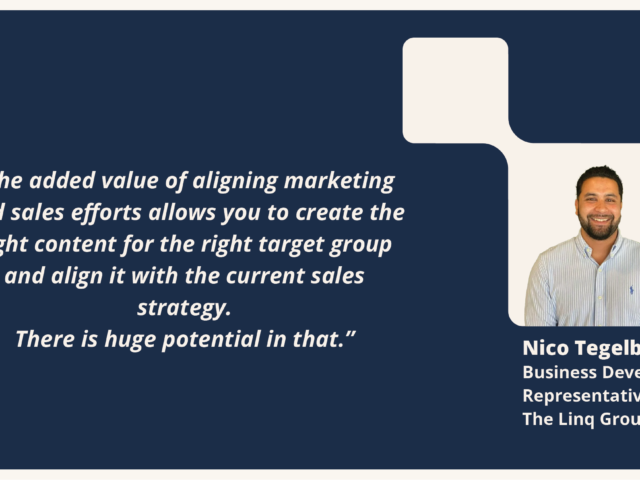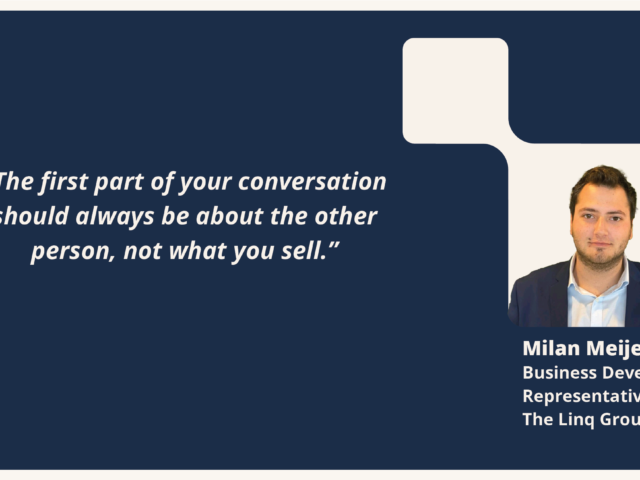Personal Branding on LinkedIn: 8 Tips to Create Engaging Content

Over the past years, LinkedIn has made its way into nearly every conversation about personal branding.
And justifiably so. The platform has become one of the most interesting spaces to build an online presence.
An effective way to build a following and attract your target audience is by creating valuable and relevant content. However, just like with any other social media platform, we now see hundreds of content pieces on LinkedIn every day – but only interact with a handful of them.
So, what makes a good post stand out from the rest? How can you leverage your content to build your personal brand on the platform? And how can you make sure you catch the attention of the right audience?
We have collected our top eight personal branding tips to help you write compelling LinkedIn posts your audience will get excited about.
How to build your personal brand on LinkedIn
Before you start creating content to build your personal brand, it’s important to have a good understanding of LinkedIn as a platform. Spend some time reading through your feed and getting familiar with the type of content people share.
Start following other creators and observe their work to get a notion of how they use LinkedIn to grow their brand. Look through their posts and pay attention to the ones that perform better than others. What is the length of their top-performing posts? How are they structured? What is the goal of their content and what tone of voice do they use?
The more you know about the platform, the better you can tailor your content to it.
Identify your target audience
Everything you create is for your audience. So, before you start writing, it is important to identify the people you want to reach. The best way to do this is by building a buyer persona.
A buyer persona is a detailed representation of someone who is part of your target audience. Though, it is a fictional profile, it is rooted in comprehensive research and captures everything from age and job title to their challenges and preferred social media channels.
Important details your buyer persona should include are:
- Demographics – age, language, location
- Psychographics – motivation, goals, values, and interests
- Online behavior – the type of content they engage with and the times they are online
Once you know the people you want to target, you can start creating a content strategy.
If you want to use your personal brand to attract prospects, you need to provide them with value first. This will allow you to build credibility and show them how your expertise can solve their problems.
Focus on helping your audience
People consume content to either solve a problem or be entertained. If you want to promote your product, let’s say, an email management software, see what potential customers are saying about email communication. Can you help them sound more confident in their emails? Do they need a template for an email newsletter? Don’t make your content all about you, focus on how you can solve your audience’s problems.
Use language that resonates with your readers
Your tone of voice and use of words are integral to your content success. Your writing style should reflect your brand’s personality and align with your target audience. For example, if you’re targeting senior-level professionals, you will likely use more formal language. However, if you’re targeting a creative audience, you might use a more casual and conversational tone.
It’s also important to use words and phrases that your target audience can relate to. Avoid jargon and complex language that may alienate some people. Don’t try too hard to sound smart, focus on delivering a clear message that your readers will understand. Keep your sentences concise and use an active voice to make your content more engaging and conversational.
Provide quality over quantity
If you are now getting excited and want to jump right into building and growing your personal brand, you might be inclined to start posting as much content as you can. However, the quality of your content is much more important than the quantity. It’s better to write two or three high-quality posts per week than five mediocre ones.
The quality and relevancy of your content will attract the right people. Focus on providing your target audience with content that informs, educates, or entertains them. Again, your buyer persona will be your guide in this process.
Build an engaging community
Using your personal brand to build a community is one of the most valuable assets you can create for yourself and your business. Use your posts to have a conversation with your audience. Add call-to-action prompts and open questions to encourage them to comment or share your posts. The higher the engagement rate the better your content will perform.
It’s important to remember: Engagement is a two-way street. Make sure to respond to comments and reposts shortly after they have been posted. Show that you value your community’s support and make your responses conversational. If they have a question, answer it thoroughly. If they respond to a quote from your post that resonated with them, acknowledge it and let them know you appreciate their input.
High-quality comments are an essential element of your personal brand. They can be just as valuable as the content itself. If others see that you respond to your audience, they will feel much more comfortable adding a comment to your next post.
Use storytelling to make your posts memorable
People remember well-told stories more than they remember facts and figures. By weaving a narrative into your posts, you can capture your audience’s attention and keep them engaged.
The story you tell can be inspiring, entertaining, or educational. But, it also has to be relatable. Somewhere in your story should be a moment your audience can identify with.
If you tell a story about how you closed your biggest deal ever, also mention the times when you thought you don’t have what it takes to be successful. Or if you share how you felt when the moment you hit a milestone with your 1000th customer, talk about the many times you thought your business might not make it.
We are rarely alone with our failure, and if people can see themselves in your story, they are much more comfortable sharing their own experiences with you too.
Show up as your authentic self
Finally, use your personal brand to talk about yourself and let people get to know you on a more intimate level. Being authentic in your posts will help you build stronger, more trusting relationships.
Write about your personal experiences, values, and goals. Use your content to share your expertise and give advice you would have needed earlier in your career. It is also a great place to put your company into the spotlight and highlight the team you work with, your company’s culture, and all the goals you achieved together.
LinkedIn is filled with professional and perfectly polished content. Reading posts by people who are being authentically themselves is like a breath of fresh air and usually performs really well on the platform. This will also make you seem more approachable and trustworthy.
By consistently showing up in your network’s timeline with relevant content you can make sure to stay top of mind and establish yourself as an expert in your industry. So, the next time your target audience has a problem they know you (or your company) can solve, they are more likely to reach out to you instead of your competitor.
To wrap it up, writing effective LinkedIn posts for your audience requires a deep understanding of your target audience, the right use of language and keywords, valuable and engaging content, community building, and showing up authentically.
Do you want a more comprehensive step-by-step guide that will help you build a successful personal brand? Download our personal branding white paper below.












